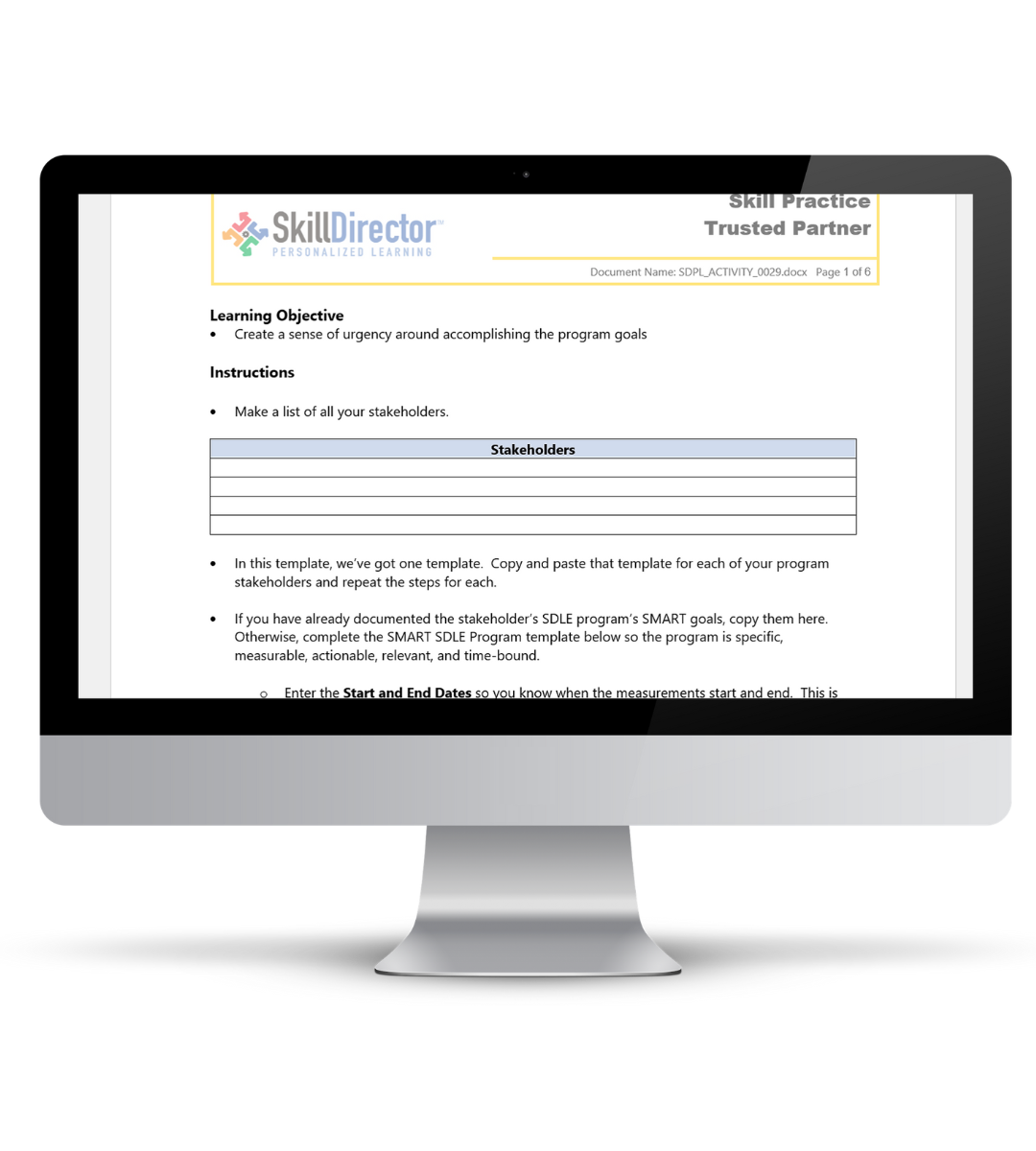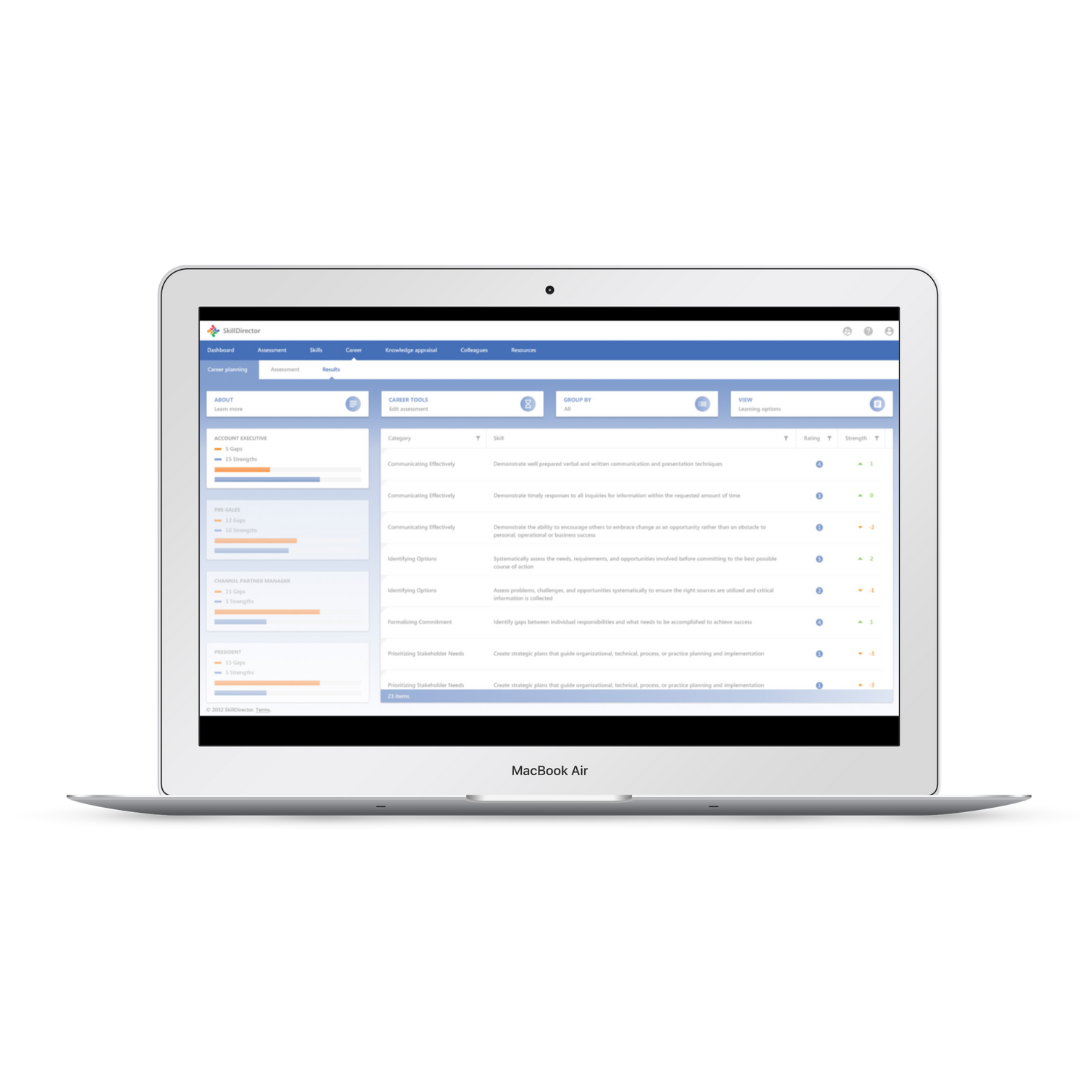
Hit the ground running in 2023 with our competency-based learning toolkit
SkillDirector's competency-based learning toolkit drives real behavior change with 2 key components.
• Competency models communicate skill requirements. They help you recruit, onboard, and retain employees. With specific behaviors at each level of proficiency, they drive self-awareness and action.
• Skill practices enable people to learn new behaviors by applying them in-the-flow-of-work. Instead of case studies and role plays, this is real application and feedback which drives real behavior change. Experiential learning. All without the “no time for learning” excuse.
SKILL PRACTICES/ EXPERIENTIAL LEARNING
Learning in the flow of work

Use prebuilt skill practices to learn skills that transcend the changes (digitization, artificial intelligence) that affect jobs today: business acumen, critical thinking, communication, project planning, personal operational excellence, problem solving, and sales acumen. Skill practices combine the best way to learn with a solution that overcomes excuses.
Our skill practices cover one learning objective and contain:
-Background – the circumstances describing the situation in which the skill practice must occur
-A template for performing the skill practice that enables consistent output/results
-Examples for the learner, along with instructions, so they don’t get frustrated with the activity
Duration varies based upon the learning objective, however, all skill practices involve the application of learning to something the learner must perform in their current job – a real business opportunity. This makes it more relevant, better retained, and does not take time away from the job – it directly applies the learning to something the learner needs to perform anyway. When the skill practice is done, the work is done!
Testimonies
Great activity to organize and prioritize weekly activities. Really enjoyed this approach to identifying tasks and setting order to completion.
-SDLE User, PPG
"Seeking to find the "Why" behind the "What." This exercise has helped me to reinforce that the better the question, the customer talk and reveal issues about their business. For me, the key is to listen, take notes, and after the call rewrite the notes."
-SDLE User, LinkedIn
Competency Models
Enabling you to perpetually upskill, reskill and close skill gaps

A competency model is the roadmap to competitive advantage. Competency models identify what the organization needs people to do for the organization to succeed and create competitive advantage. Without models, it’s impossible to know whether people can execute their part of corporate strategy, so you upskill and reskill appropriately.
Competency models provides employees with objective expectations of the competencies and proficiencies required of them. Expectations drive intrinsic motivation to mastery. A competency model communicates the required skills, and more importantly, what the behaviors look like at each level of proficiency. It is those behaviors that drive self-awareness, which leads to action. When people don’t know what it takes to be great at their job, they will maintain the status quo.
A competency model will help you recruit, onboard, grow, and retain employees. By setting early, clear, objective expectations, people can take control of their career development. They can clearly determine what role they may want to do next. LinkedIn’s 2022 Workplace Learning Report research shows that career growth is the top motivator to learn. It’s so hard to find great talent today – use competency models to keep them!
Each model contains competencies, tasks/skills, behavioral examples, and target proficiency levels. Use our competency models out of the box or customize them.
“Developing your employees’ skills at a rate equivalent to the rate of changes is the key to a sustainable competitive advantage. We need people who have the latest skills and who build new ones quickly”
– The Expertise Economy